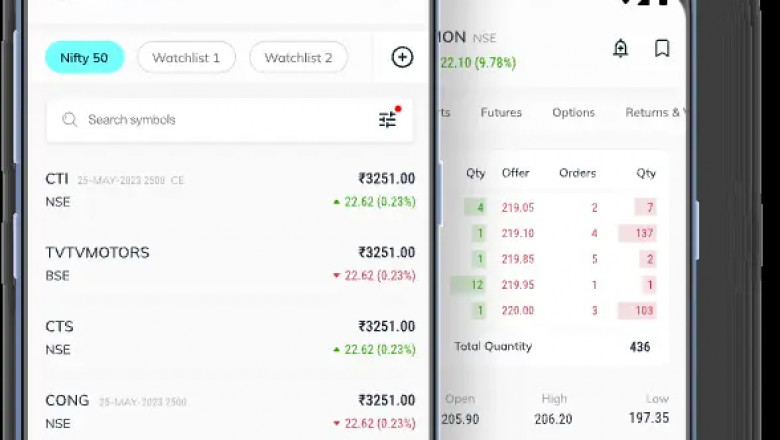views
The stock market today live is more accessible than ever, with platforms allowing anyone to open trading account and participate in various trading styles. Two of the most common approaches are margin trading and delivery trading. Each has its own features, benefits, and risks, making it important for every investor to understand the differences before deciding which suits their goals. This article will explain margin trading and delivery trading in simple terms, helping you make a confident choice when you open trading account and start investing.
What Is Margin Trading?
Margin trading allows you to buy shares using borrowed funds from your broker. This means you can trade with more money than you actually have in your account. The main aim of margin trading is to increase your potential returns by using leverage, but it also increases your risk. If the market moves against your position, your losses can be much larger than your initial investment.
When you open trading account, you can choose a margin account if you want to use this facility. The broker lends you money, and the shares you buy act as collateral. You must maintain a minimum balance, known as the maintenance margin, and if your account value falls below this, you will receive a margin call. This requires you to add more funds or sell some shares to cover the shortfall.
Features of Margin Trading
- Trade with borrowed money, increasing your buying power
- Potential for higher profits, but also higher losses
- Interest is charged on the borrowed amount
- Requires a margin account with your broker
When to Consider Margin Trading?
Margin trading is suitable for experienced investors who closely follow the stock market today live and are comfortable with higher risk. It is often used for short-term trades, where quick price movements can lead to significant gains or losses.
What Is Delivery Trading?
Delivery trading is a straightforward approach where you buy shares and hold them in your demat account for more than one day. You become the actual owner of the shares and can keep them for weeks, months, or even years. This method is ideal for those who prefer long-term investment and want to benefit from price appreciation or dividends.
When you open trading account, you can choose to buy shares for delivery. The shares are transferred to your demat account, and you are free to sell them whenever you wish. Delivery trading does not involve borrowing money, so you must pay the full price of the shares at the time of purchase.
Features of Delivery Trading
- Full ownership of shares held in your demat account
- No interest charges, as you use your own funds
- Eligible for dividends and shareholder rights
- Suitable for long-term investment strategies
When to Consider Delivery Trading?
Delivery trading is best for those who want to build wealth over time and avoid the pressure of daily market movements. It is less risky than margin trading, as you cannot lose more than your initial investment.
Margin Trading vs Delivery Trading: A Simple Comparison
|
Feature |
Margin Trading |
Delivery Trading |
|
Funds Used |
Borrowed (plus own capital) |
Only own capital |
|
Ownership of Shares |
Temporary, until the position is closed |
Full, shares held in demat account |
|
Risk Level |
High (losses can exceed the initial investment) |
Lower (losses limited to the amount invested) |
|
Interest Charges |
Yes, on borrowed funds |
No |
|
Suitable For |
Active, experienced traders |
Long-term investors |
|
Eligibility for Dividends |
No |
Yes |
Conclusion
Both margin trading and delivery trading offer unique opportunities in the stock market today live. Before you open a trading account, consider your investment goals and risk tolerance. Margin trading can boost your buying power, but it comes with higher risks and costs. Delivery trading provides ownership and stability, making it ideal for those who want to build wealth gradually. Make your choice wisely, and always keep learning to become a better investor.






















Comments
0 comment